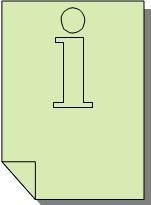
| Home | Project Requirements | Introduction | Wearable Technologies | Concerns | References | About Me |

SixthSense is primarily composed of a pocket protector, a mirror, a camera, finger-tip sensors, and a cell phone (Mistri, 2010). Mistri describes his invention as follows: “It uses the above components to essentially use project a digital image and then manipulate that image using sensors attached to the user’s fingertips (Mistri, 2010). In other words, instead of manipulating a LCD screen you can “project” what you would normally see on a cell phone onto a wall or object. Then instead of touching the object, you move your hands and fingers and then touch your new “screen”. Mistri further describes his technology: “Both the projector and the camera are connected to the mobile computing device in the user’s pocket. The projector projects visual information enabling services, walls and physical objects around us to be used as interfaces; while the camera recognizes and tracks user’s hand gestures and physical objects using computer-vision based techniques. The software program processes the video stream data captured by the camera and tracks the locations of the colored markers (visual tracking fiducials) at the tip of the the user’s fingers using simple computer-vision techniques. The movements and arrangements of these fiducials are interpreted into gestures that act as interaction instructions for the projected application interfaces. The maximum number of tracked fingers is only constrained by the number of unique fiducials, thus SixthSense also supports multi-touch and multi-user interaction” (Mistri, 2010).
Some of the potential benefits of SixthSense become clear—using normal human gestures and movements to create your own type of Graphical User Interface (GUI). This improvised GUI can be utterly convenient—to project a display onto a wall, or your hand (to make a phone call) rather than look at a small hand-held device, such as a cell phone. Even surfing the web can be done in life-size pictures, instead of a cell phone.
Another benefit of SixthSense technology is giving the user the ability to access vast amounts of information in real-time. For example, the camera technology can recognize objects, such as people, products at the grocery store, etc. Anything that has an electronic signature (barcode or even facial recognition software for humans) is scanned by the software and the camera and then displays information in front of the user. The quickness of the information being displayed can aid with decision making (reviews on an item to purchase in near real-time). This software is open source code, available for download (Nafissa, 2012).
The foresight by Mistri cannot be understated. According to Gerber, wearable technologies of all sorts will become extensions of ourselves; a way to “augment reality”; and lastly, even unlock big data (Gerber, 2013). Yonck describes the future as a future of technology as largely the evolution of interfaces. He says “The marks of a good interface are its intuitiveness, ease of use, and ability to handle tasks more efficiently. As interfaces have progressed, the trend has been toward ever more natural implementations, resulting in devices that can better integrate with the way people work and play. Over time, these progressions will likely lead to organic user interfaces, which will allow our tools to become even more intimately part of our lives. Eventually, this may even lead to the development of a true exocortex, an additional aspect of our memory and processing that would exist outside of our bodies. The result would be a tremendous increase in our effective personal knowledge and the intelligence we could bring to bear on a given task or problem” (Yonck, 2010).
The SixthSense technology and other wearable technologies such as the Galaxy Gear Smartwatch and Google Glass do not have a consumer base yet (Baar 2013). However, they probably will—as the world becomes increasingly digitized. Evidence for this is clear: President Obama in 2013 announced 100 million dollars in funding for futuristic technologies. Gray cites one example: “Brain Research Through Advancing Innovative Neurotechnologies (BRAIN); The age of neurotechnology has officially arrived” (Gray, 2013). This presidential investment makes a compelling case for the future of wearable technologies. “Many examples of transformative neurotechnology are making their way to market now. Brain-computer interface (BCI) devices with electrodes embedded into headgear can read the faint electrical activity along the scalp. You can control a computer, robot, or drone with the power of thought” (Scott, 2013). If there are already medical advances in neurotechnology, and this technology is even being funded by the government, certainly the average person at home will have similar technologies at their disposal in the near future due to inventions and businesses.